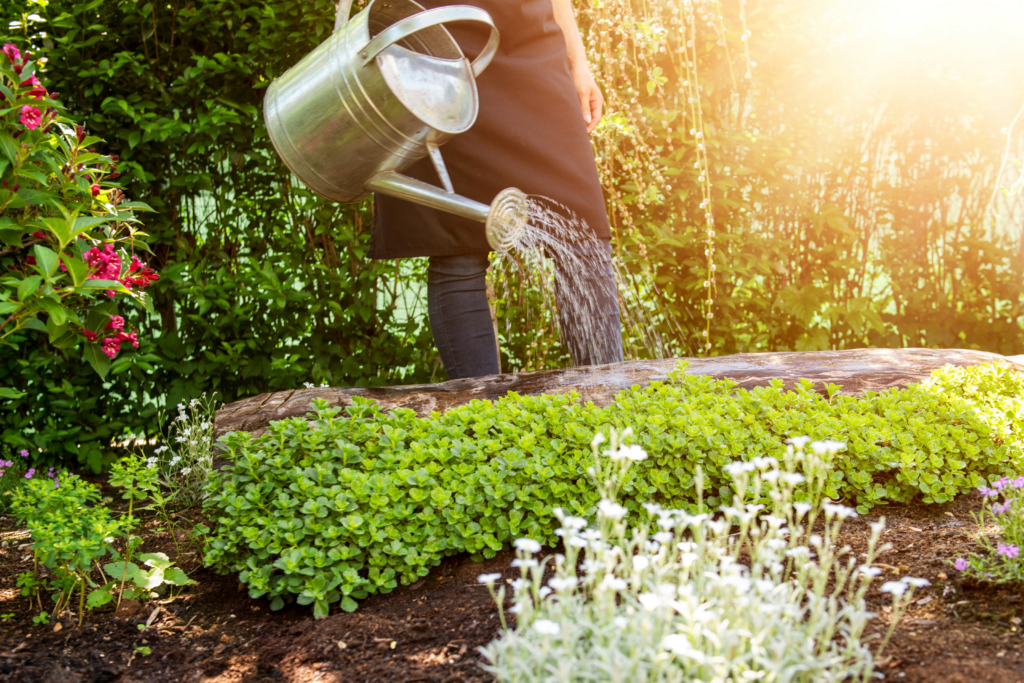April isn’t just a time to welcome warmer weather, it’s also National Gardening Month, the ideal season to roll up your sleeves and get your hands dirty. Whether you’re an experienced gardener, a homeowner tending to your little patch of earth, or a complete novice considering the leap into the world of plant life, there’s a profound joy in growing something from the soil. In celebration of National Gardening Month, we’ll explore how you can clean up and maintain your existing garden spaces or start sowing the seeds for a new one. Plus, we’ll look at the myriad health benefits gardening offers and showcase some exciting trends in modern horticulture.
Top Garden Tips for April: Preparing Your Existing Garden
Assess Your Garden
The start of the season is a vital time to assess your garden’s condition. Take note of plants that may not have survived the winter, areas with drainage problems, and any necessary repairs to structures like trellises or fences. This initial observation will guide your maintenance plan for the rest of the month.
Pruning and Weeding
Unleash your inner barber by giving your plants a trim. Focus on removing dead, damaged, or diseased branches to encourage healthy growth and to keep your garden looking tidy. Weeding is also crucial at this stage to prevent unwanted plants from sapping nutrients and space from your chosen flora.

Soil Enrichment
Healthy soil is the foundation of a prosperous garden. Consider adding organic matter like compost or well-rotted manure to feed your plants. This is also a great time to check pH levels and make any necessary adjustments to ensure your soil is perfectly balanced for optimal plant health.
Spring Cleaning for Your Garden: A Refreshing Ritual
Just like our homes benefit from spring cleaning, our gardens do too. This spring, don’t just limit your cleaning to indoors. Out in the garden, it’s time to:
Tackle Pests and Diseases
Inspect your plants for signs of infestation or disease. Early intervention can save both your plant and your garden. Look for organic solutions to these issues; you’ll want to avoid harsh chemicals that can harm the beneficial insects and microbes in your garden.
Refresh Garden Beds
Edge and mulch your garden beds. Edging not only looks good, but it also keeps grass and weeds from encroaching on your garden spaces. Mulching helps to retain moisture and suppress weeds, all while giving your garden a polished look.
Cleaning Garden Tools
Maintain the tools that maintain your garden. Wash off soil and debris, sharpen blades, and treat any rusty spots. Taking proper care of your tools not only extends their lifespan but also makes gardening tasks easier and more effective.

A Beginner’s Guide to Starting Your First Garden
Location, Location, Location
The first step is finding the right spot for your garden. Most plants need plenty of sunlight, so choose a location that receives at least 6 hours of direct sun a day. Also, consider proximity to water sources, existing structures, and potential impacts from wildlife.
Choosing Plants Wisely
Beginners are often best served by starting with plants that are easy to grow and maintain. Herbs like basil, mint, or oregano; vegetables like tomatoes and lettuce; and flowers like marigolds or pansies are great choices for novice gardeners.
Preparing the Soil
Good soil is key to plant health. Loosen the soil where you intend to plant, mix in some compost, and you’re well on your way to happy, healthy plants.
Watering
Consistent watering is essential, especially for new plants. Keep an eye on the weather and adjust your watering schedule as necessary.

Patience and Persistence
Not all plants will flourish immediately, and it’s crucial to be patient. Learn from each gardening season and persist in your efforts, and you’ll see growth, both in your garden and in your gardening skills.
The Joy of Growing: Beyond Beauty, the Health Benefits of Gardening
Mental Health
The act of caring for plants can be incredibly therapeutic. Cultivating a garden has been linked to reducing stress, improving mood, and even helping to alleviate symptoms of anxiety and depression.

Physical Health
Gardening is a uniquely rewarding form of exercise. It can help improve endurance, strength, and flexibility, all while burning calories and getting you outdoors in the fresh air.
Nurturing the Environment
Gardening can contribute positively to the environment. Plants absorb carbon dioxide, produce oxygen, and can even improve air quality in and around your home. By growing your own food, you can reduce your carbon footprint and decrease reliance on the industrial food system.
Blooming Trends in Modern Gardening
Vertical Gardens
For those with limited space, vertical gardening is a beautiful solution. These gardens can be as simple as a hanging herb garden or as complex as a multi-tier living wall.

Sustainable Gardening
More people are looking for eco-friendly practices in their gardening. This may include using rain barrels, practicing composting, and selecting native plants that require less water and enhance local ecosystems.
Pollinator Gardens
Creating a space that attracts pollinators, like bees and butterflies, is not only trendy but vital for our ecosystem. Choose plants designed to attract these creatures and provide them with a safe haven in your garden.
Conclusion
Gardening is a year-round adventure, but National Gardening Month is the perfect time to recommit to your green spaces. Whether you’re tending to a window box filled with herbs or cultivating a five-acre plot, the act of gardening is a deeply rewarding experience. Share your gardening stories and any tips you have with us. Together, we can cultivate a community that celebrates the natural world and the joy of growing.






